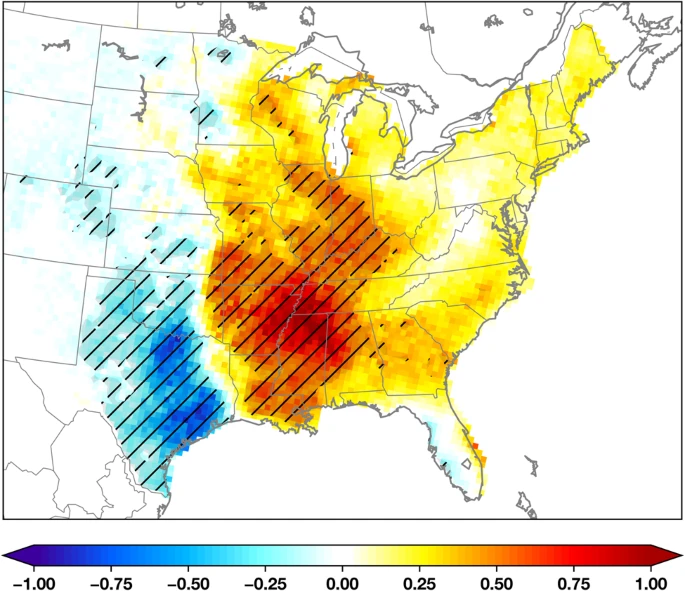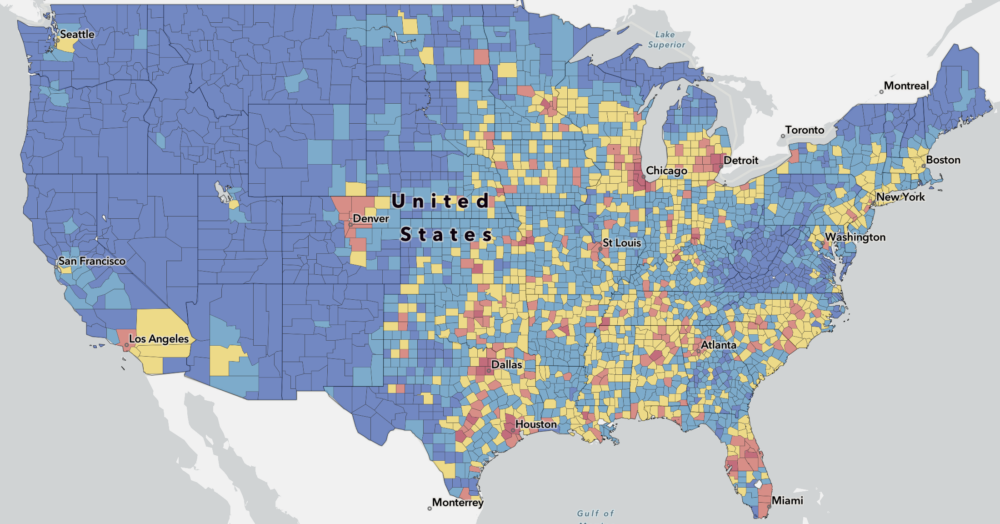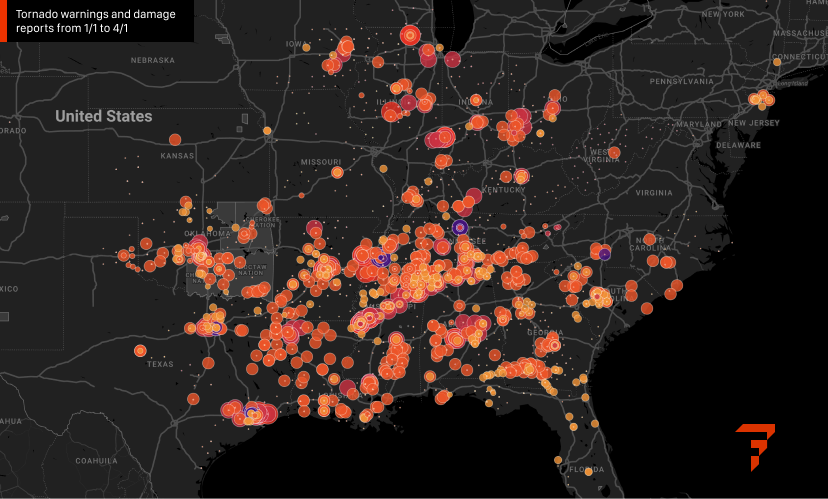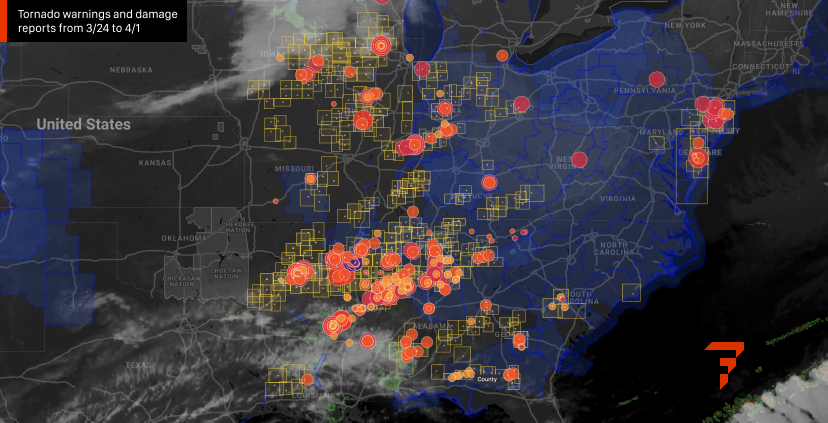Tornado season is off to a devastating start, killing more than 50 people across at least 7 states in the South and Midwest in a single week. Prior to the most recent tornado outbreaks, the Storm Prediction Center recorded 178 tornadoes in January and February, marking the fourth highest count in history.
While some years are more active than others, the frequency of tornadoes has remained relatively the same. But the behavior of tornadoes is evolving with some important implications for business continuity and employee safety.
Tornado clusters are more common – and increasingly predictable
Driven in large part by supercells, tornadoes are increasingly spawning in larger clusters, increasing the scope and scale of destruction. The average number of tornadoes in an outbreak rose from about 10 in the 1950s to about 15 in the 2010s, according to researchers. When one tornado dissipates, another forms. Taken together, outbreaks live longer and cover more ground, often stretching into the late-night hours.
As opposed to isolated tornadoes that come and go, outbreaks can follow a directional pattern over several hours. By monitoring NWS warnings, storm watcher reports, live radar and coverage from local reporters, companies can assess developments and ensure that employees are taking proper precautions. At Factal, we synthesize this information in real time, triangulate it with your company’s footprint and save critical minutes in response time. (If you’re a company interested in taking Factal for a test spin, it’s easy to book a trial on Factal.com).
At the same time, the Storm Prediction Center is getting increasingly accurate at predicting near-term conditions for tornado outbreaks. For example, SPC correctly predicted the geographic risk of the March 31st cluster of tornadoes. Here’s the risk map that the center published on March 30th combined with the actual tornadoes (red dots) and high-wind events (blue) recorded the following day:

SPC forecasts are issued as far as three days in advance, and they’ve become increasingly critical for companies to identify potential outbreaks and ensure staff are prepared.
It’s likely that clusters will become even more common than they are today. A computer simulation discovered that supercells are forming more often as the climate warms, setting the stage for larger outbreaks to come.
Tornadoes are shifting into more populated areas
Traditionally tornadoes have focused on the central Great Plains states of Texas, Oklahoma, Kansas and Nebraska, known “Tornado Alley.” But a landmark study in 2018 found that tornado frequency was shifting into the Southeast, Midwest and the Northeast. This map from the study shows areas that have experienced a decline in significant tornado frequency (blue) compared to areas on the rise (red):
Tornadoes are pushing into more populated areas, exposing new communities and unfamiliar residents to a heightened risk of devastating storms. Many homes lack a basement. FEMA’s National Risk Index map for tornadoes shows a wide distribution of risk well outside the confines of Tornado Alley:
And here’s Factal’s archival coverage of all significant tornado events so far this year (below). Small circles represent warnings in more rural areas, larger circles illustrate higher severity events resulting in damage on the ground:

This geographic shift – perhaps it’s better to call it an expansion – has clear implications for business continuity. Similar to hurricane planning, tornado disaster planning has to expand beyond “tornado alley” to consider the growing likelihood of higher-severity storms in unusual places. Beyond Dallas-Fort Worth and Oklahoma City, major metropolitan areas like Chicago, New York and Washington DC are now in higher-risk zones. Remote work complicates matters, as employees who live in emerging tornado country may not be prepared for the immediate wind and flooding risk or the ensuing lack of power, internet and cell phone service.
As weather becomes more severe across more populated areas, advances in forecasting, risk assessment and real-time information help mitigate the growing damage and loss of life. By keeping pace with new developments, companies can adapt to emerging risks and strengthen their resilience in a progressively warming world.
(Cory Bergman is the co-founder of Factal and the co-host of the Global Security Briefing. This blog post is adapted from March 30th briefing on tornado behavior.)
What is Factal?
Trusted by many of the world’s largest companies and nearly 300 humanitarian NGOs, Factal is a risk intelligence and collaboration platform that brings clarity to an increasingly noisy and uncertain world.
Powered by a hybrid of advanced AI and experienced journalists, Factal detects early signals, verifies critical details and assesses the potential impact at the speed of social media. From physical incidents and brand mentions to geopolitical developments, Factal offers the most trusted, real-time risk intelligence on the market.
Factal is also home to the largest security and safety collaboration network in the private sector. Members securely share information with other members in proximity to the same incident, both on Factal.com and the Factal app.
Learn more at Factal.com, and we’d love to hear from you.

